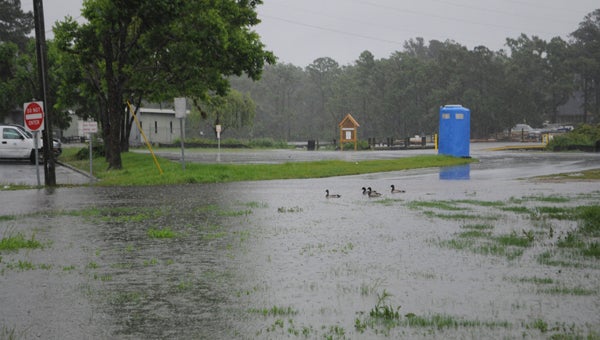Be preparing now
Published 8:47 pm Thursday, April 30, 2015

FILE PHOTO | DAILY NEWS
IT’S THAT TIME: With the 2015 hurricane season a month away, area residents should make preparations to deal with storm-associated flooding and high winds. An evacuation plan should be part of those preparations.
With hurricane season a month away, it is time to start preparing for that season, which begins June 1 and ends Nov. 30.
Hurricane forecasters are predicting the 2015 Atlantic Ocean hurricane season will be a mild one. That’s a prediction, not a guarantee. Preparation for the hurricane season is a must. Better safe than sorry.
It’s time to make sure those hurricane kits are fully stocked. Be sure to check expiration dates on batteries and any food items that may be in the hurricane kits. Make sure chargers for cellphones and other personal electronic devices are included in the hurricane kits.
Hurricane preparation is more than just making sure hurricane kits are properly stocked and ready for use. Hurricane preparation is knowing specifics about an approaching hurricane.
During a presentation at the North Carolina Estuarium in the spring of 2011, Greg “Rudi” Rudolph, a shore protection manager for Carteret County at the time, said when it comes to hurricanes, area residents should keep one factor in mind: location, location, location.
During his Tropical Cyclones 101 presentation (a hurricane is a tropical cyclone), Rudolph said key factors to keep in mind when keeping an eye on a hurricane are intensity, duration, approach (location), surge and tide. With those factors in mind, the worst-case scenario for Washington and nearby areas would be a major hurricane (Category 3, 4 or 5 on the Saffir-Simpson scale) that’s slow-moving, approaches from the south or southwest, has major storm surge associated with it and strikes at high tide.
Because the strongest area of a hurricane (which rotates in a counter-clockwise direction) is its northeast quadrant, the northeast quadrant of hurricanes passing east of Washington miss the city, he said. A hurricane coming from the south or southwest of Washington means that northeast quadrant will be the storm’s leading punch when it strikes the city, he noted.
“A couple or 10 miles can make a big difference,” Rudolph said about the effects of a hurricane on an area.
“The moral of the story here is that if it’s a tropical storm coming straight for Little Washington — panic. If it’s a category 3, 4 or 5 — really panic. You know — evacuate,” Rudolph said.
Forecasters believe this year’s hurricane season will be mild, but as Rudolph said, “it only takes one to make or break your season.”
Prepare for each and every hurricane season, regardless if that season is an active one or not.




